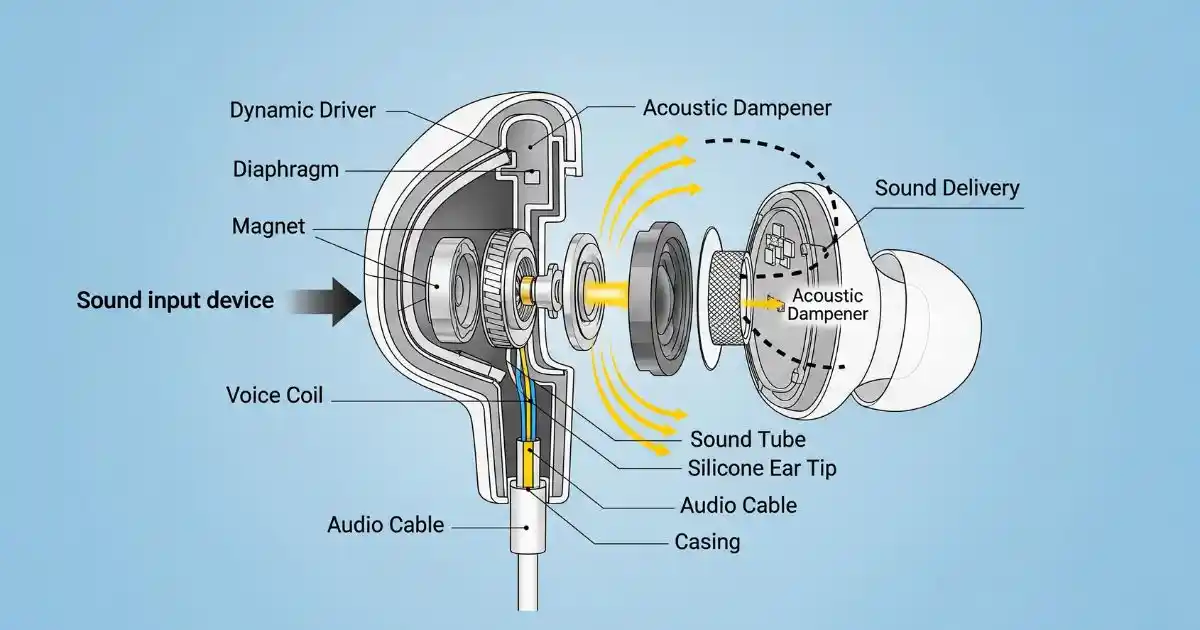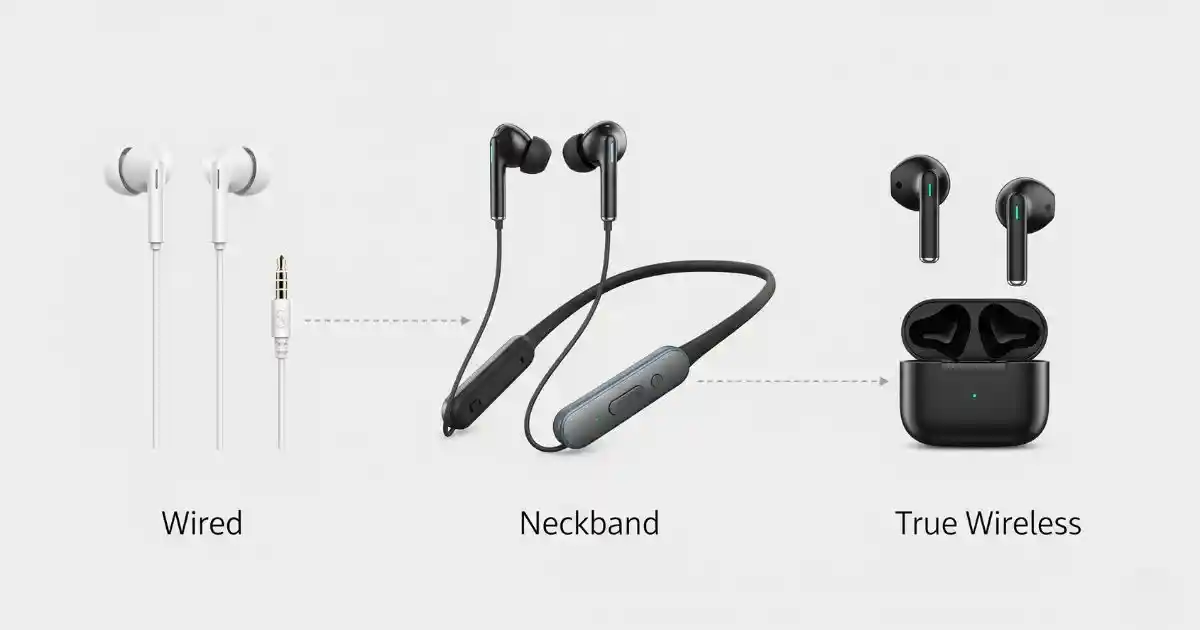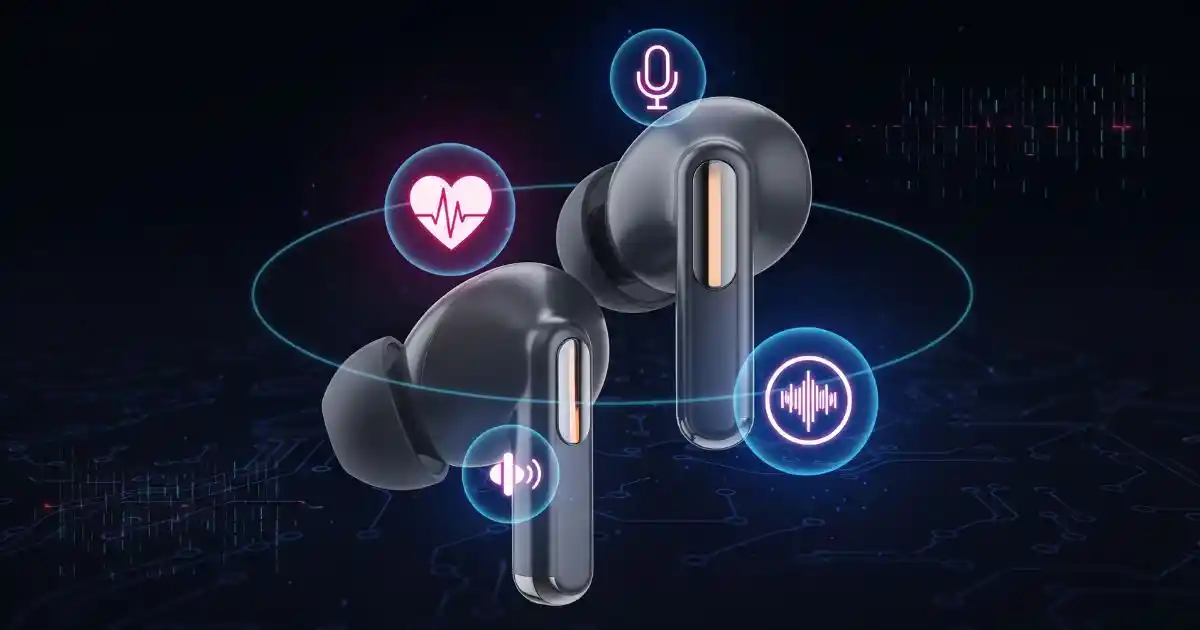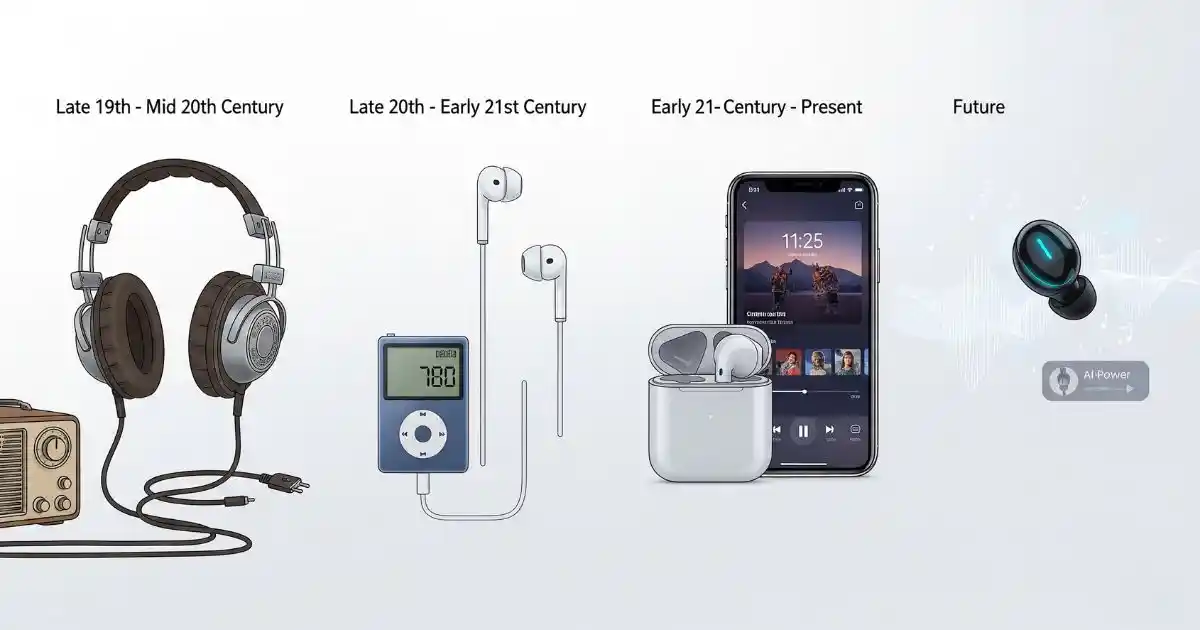In today’s tech-driven world, earbuds are more than just tiny speakers for your ears—they’ve become smart, portable audio companions that fit seamlessly into daily life. Earbuds are compact listening devices that sit inside or just at the edge of your ear canal, delivering sound directly and privately to you.
Originally, earbuds were wired and connected to cassette players or early MP3 devices. But as technology advanced, especially with Bluetooth and miniaturized batteries, wireless earbuds took over. Now, with AI-powered earbuds, these devices don’t just play music—they learn your preferences, adjust sound automatically, and even track your health.
Let’s talk about – What Are Earbuds?

Quick Navigation & Previews
What Are Earbuds?
Earbuds are small and lightweight audio devices that fit inside or just at the edge of your ear canal, delivering sound directly and privately to your ears. They are a popular choice for listening to music, podcasts, phone calls, and videos because they are compact, portable, and easy to carry anywhere.
Unlike traditional headphones that sit over or around the ears, earbuds offer a more discreet and travel-friendly design. You can find them in two main types:
- Wired earbuds – connect to your device using a cable.
- Wireless earbuds – connect via Bluetooth, offering more freedom of movement.
Modern wireless earbuds often include advanced features like:
- Noise cancellation to block unwanted sounds.
- Touch controls for quick play, pause, or call management.
- Voice assistants for hands-free control.
- Fitness tracking sensors for monitoring activity.
In short, today’s earbuds are not just simple speakers—they are multi-functional gadgets that combine entertainment, convenience, and smart technology in one tiny package.

Types of Earbuds You Should Know
Over the years, earbuds have evolved to match different lifestyles, preferences, and budgets. Here are the three main types you can choose from:
1. Wired Earbuds
Connection: Plug directly into your phone, laptop, or music player via a cable.
Advantages:
- Consistent, stable sound quality.
- No need to charge—works as long as your device does.
- Often more affordable than wireless options.
2. Wireless Earbuds
Connection: Use Bluetooth technology to connect without a wired link to your device.
Design: Often connected to each other with a small neckband for security.
Advantages:
- Tangle-free listening experience.
- Ideal for sports, commuting, and active lifestyles.
3. True Wireless Earbuds (TWS)
Connection: No cables at all—each earbud works independently.
Features:
- Comes with a charging case for portability.
- Examples include Apple AirPods, Samsung Galaxy Buds, and Sony WF series.
Advantages:
- Maximum freedom of movement.
- Stylish, compact, and highly portable.

The Rise of AI-Powered Earbuds
AI-powered earbuds are the next big leap in personal audio. These earbuds use machine learning to adapt to your environment and listening habits.
How AI Improves Earbuds:
- Adaptive Noise Control – Automatically adjusts noise cancellation based on where you are.
- Smart Assistants – Built-in Siri, Google Assistant, or Alexa to control music, make calls, or get information hands-free.
- Real-Time Language Translation – Translate conversations instantly.
- Health Monitoring – Track your heart rate, posture, or even hydration levels.
Some of the most popular models with smart features in earbuds include Sony LinkBuds, Bose QuietComfort Earbuds II, and Nothing Ear series with AI enhancements. Gamers can explore our Enhance Mobile Gaming Earbuds review for performance-focused options.

Smart Features That Make a Difference
Modern earbuds are packed with features that go far beyond sound:
Noise-Canceling Earbuds
- Active Noise Cancellation (ANC) uses microphones to block unwanted sounds.
- Passive Noise Isolation blocks noise naturally with snug ear tips.
Check our best noise-canceling earbuds guide for top picks.
Voice Assistants Integration
- Use Siri,
- Google Assistant,
- or Alexa directly from your earbuds.
Touch & Gesture Controls
- Play/pause, skip tracks, or adjust volume with simple taps or swipes.
- If you experience mic issues, see Why Apple’s AirPods Microphone Not Working.
Auto Pause/Play Sensors
- Music stops when you remove an earbud and resumes when you put it back.
Fitness & Health Tracking
- Advanced models measure workouts,
- heart rate,
- or breathing patterns.
Check our best waterproof fitness tracker for fitness-focused devices.

Evolution of Wireless Audio: Then vs Now
The journey of earbuds reflects the evolution of wireless audio itself:
- Past – Bulky wired headphones connected to cassette/CD players.
- Transition – Smaller wired earbuds with MP3 players.
- Now – Bluetooth earbuds with smart features, lossless audio, and spatial sound.
- Future – AI-driven personalization, 3D immersive audio, and deeper health tracking.
For over-ear alternatives, see Top Over-Ear Wireless Headphones.
Earbuds vs Headphones: Which One’s Better?
| Feature | Earbuds | Headphones |
|---|---|---|
| Portability | Extremely portable, pocket-sized | Bulkier, needs a case or bag |
| Sound Quality | Great in premium models | Often better bass & soundstage |
| Comfort | Lightweight, good for short sessions | Padded, better for long listening |
| Use Case | Travel, gym, daily commute | Gaming, studio work, long flights |
Earbuds are ideal for mobility, while headphones excel in comfort and sound depth. For studio options, check Best Budget Studio Headphones and Best Audiophile Headphones.
Final Thoughts: Are Smart Earbuds Worth It?
From simple wired devices to AI-powered earbuds that adapt to your lifestyle, earbuds have transformed into intelligent companions. If you value portability, convenience, and smart features, they’re worth the investment.
In short choose the earbuds that match your lifestyle. Whether you’re chasing premium sound, AI features, or a budget-friendly option, there’s a perfect pair for everyone in today’s smart world.
FAQs
1. What Are Earbuds and How Do They Work?
Earbuds are small audio devices that fit in or near your ear canal. They connect via wires or Bluetooth to deliver clear, private sound directly to your ears.
2. Which Type of Earbuds Is Best – Wired, Wireless, or True Wireless?
Wired earbuds are reliable and don’t need charging. Wireless models offer freedom with a neckband, while true wireless earbuds are the most portable and stylish.
3. What Are AI-Powered Earbuds and Are They Worth It?
AI-powered earbuds adapt sound to your environment, reduce noise, and even track health. They’re worth it if you value convenience and smart features.
4. Do Earbuds Have Better Sound Quality Than Headphones?
High-end earbuds can deliver great sound, but headphones usually provide a wider soundstage and deeper bass because of their larger drivers.
5. What Features Should I Look for When Buying Earbuds?
Look for noise cancellation, comfort, long battery life, good sound quality, and water resistance to match your lifestyle needs.
Leave a Reply